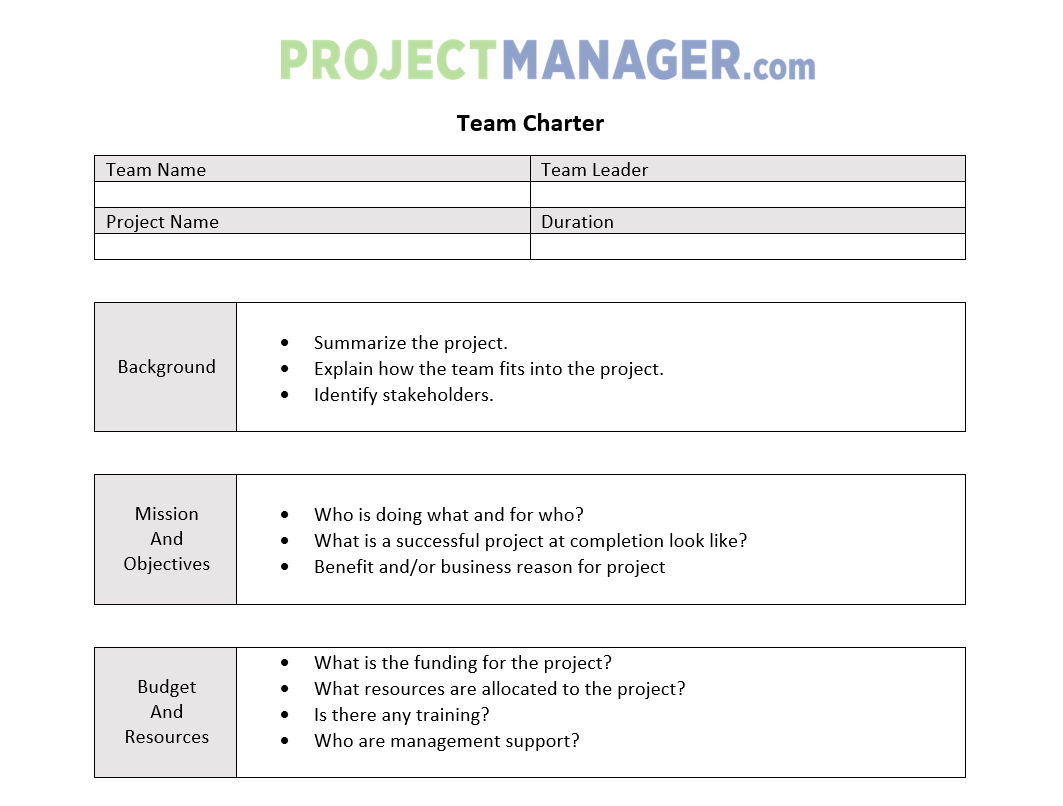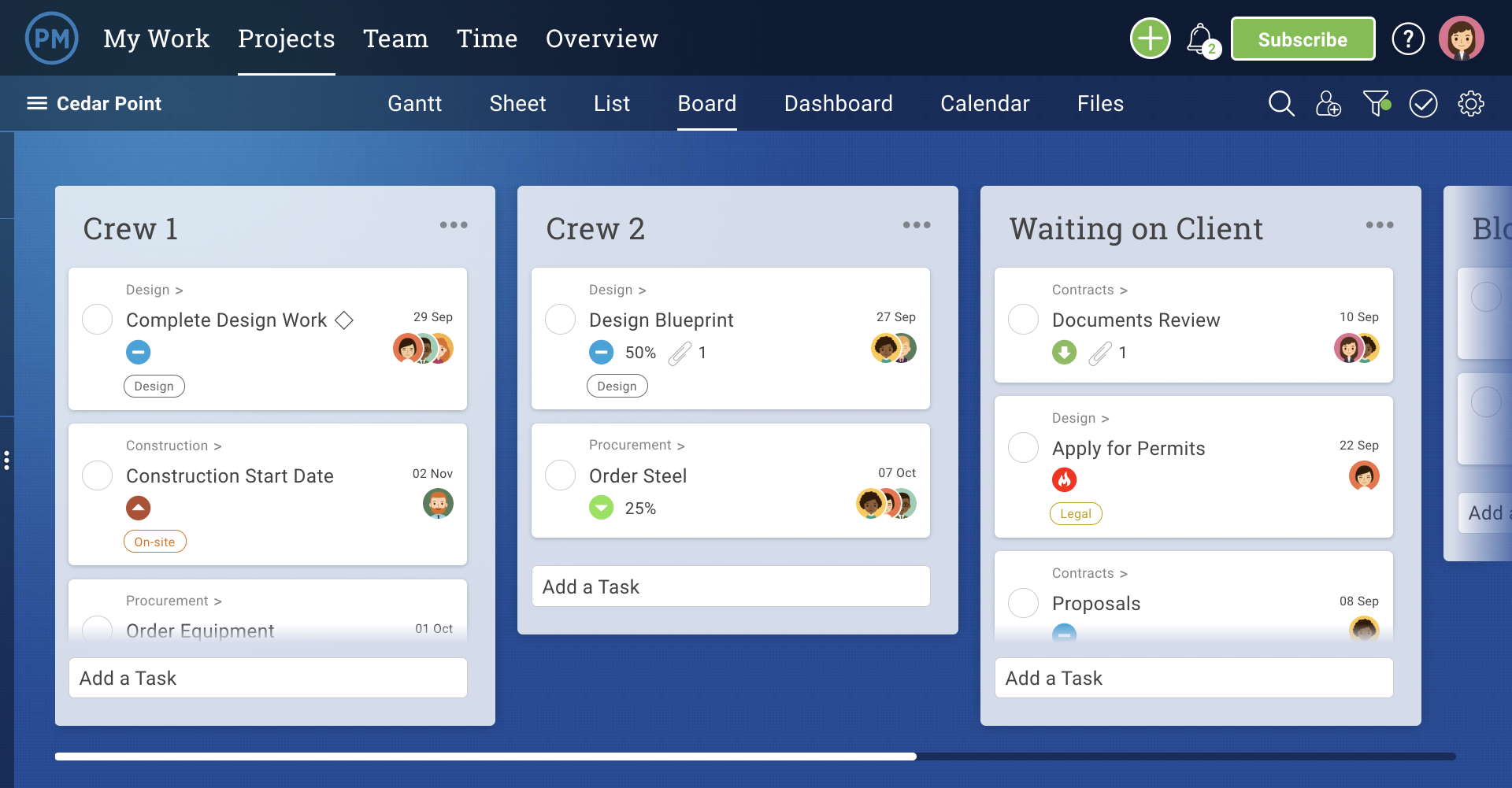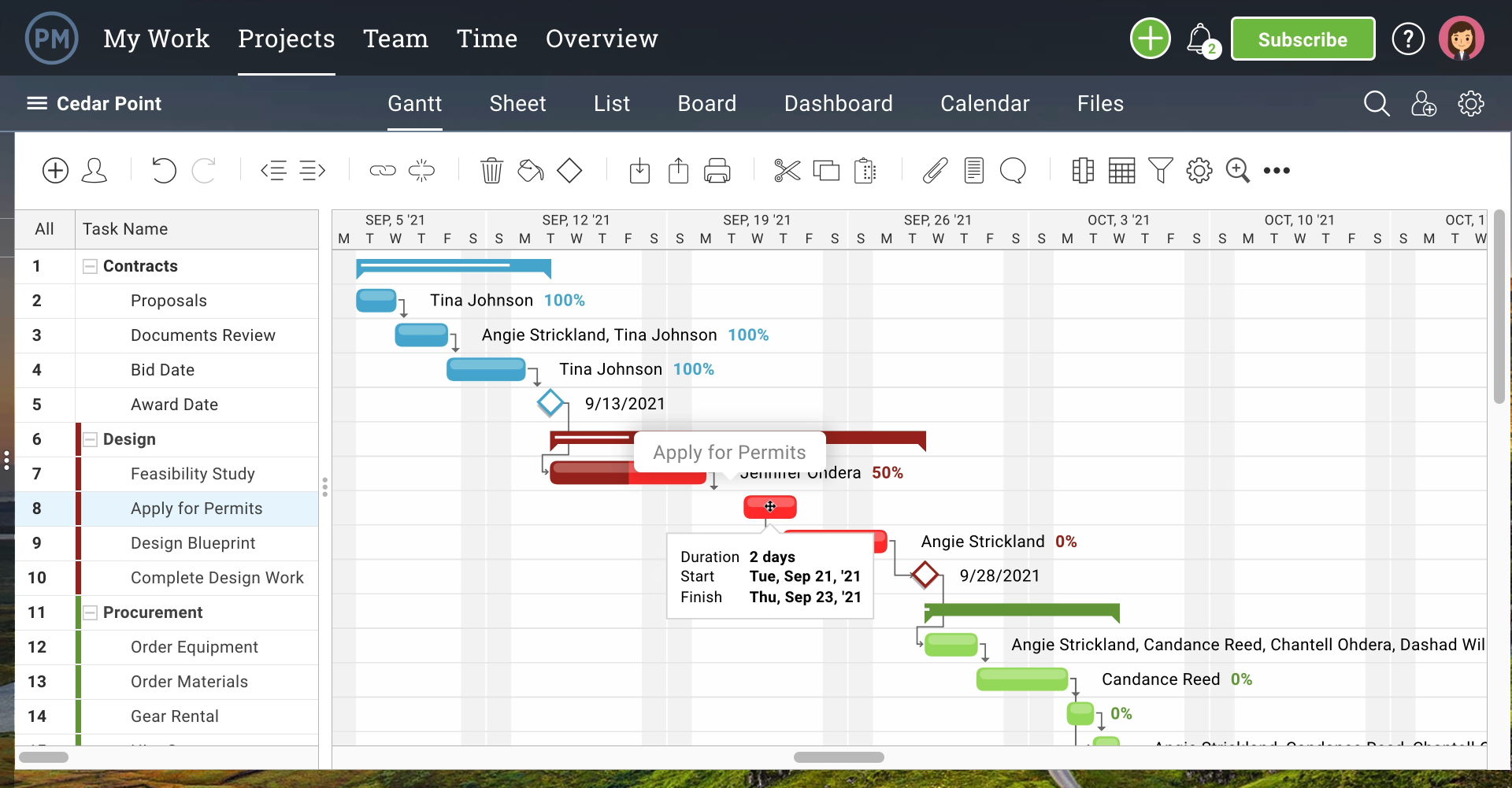How To Create A Charter For An Organization
Just as a project has a charter to define its scope, so too must your team have a charter to put their work in context. Teams need to know the who, what, why, when and how of the project, and a team charter is the perfect way to feed them that information.
Once you get buy-in from the team, and they know where they stand and how to maneuver through the project, you're on the road to success. Let's explore how to put a team charter together.

Set your teams up for success with ProjectManager.com's team management tools. Try it for yourself today!
What Is a Team Charter?
A team charter is a document that outlines why the team has been brought into the project, what the team is being tasked to accomplish and the resources and constraints in which the team will be working.
The team charter is often created in a group setting, which gives the team direction and boundaries in a transparent environment. This collective development gets buy-in from the team and makes sure everyone understands their part in the project.
Why Is a Team Charter Important?
There are two main reasons for the team charter. First, it clearly outlines the project objectives and how the team is responsible for tasks that lead to the final deliverable. Second, it informs outside project members on what the team is and isn't responsible for.
Another benefit of using a team charter is that it creates transparency in the team, which leads to more accountability. It gives the team the structure to build agreement on how they wish to operate within the project and how they make decisions. This is done by defining the frequency of meetings and other logistics.
Obviously, the team charter removes roadblocks and sets a course for the team to work together more effectively, while staying aligned with the project's overall goals. One way it does this is by clearly defining each team members' role and responsibilities in the project and their level of authority in any particular aspect of the project. It also sets what resources they can request.
What Are the Elements of a Team Charter?
A team charter is made up of several sections which directly relate to the team's involvement in the project. While team charters can change depending on the project, they all tend to share the elements outlined below.
1. Background
The first thing to do is lay the groundwork for the project. That is, summarize what it's about and why it's being initiated. This allows the team to see how they fit in the overall project, as well as identifying the stakeholders who are invested in the project's success.
2. Mission and Objectives
The mission statement defines the background section further by defining what success looks like in the project, so the team knows what they're aiming for each time they take on a new task. Expanding again to the big picture, the benefits and business driving the project are explained.
3. Budget and Resources
The funding for the project is defined in this section, including what resources are earmarked. Team members may be curious if there is any training offered, so the team leader will say whether training is included. Finally, in terms of finance, the management who supports the team is identified so they can be contacted with any questions related to costs.
4. Roles and Responsibilities
Everybody on the team needs to know their role and responsibility in order to not get in each other's way. Here, list their skill sets and expertise, as well as who has authority over whom.
5. Team Operations
For a team to work effectively, their operational structure must be outlined. Also, if a new team member enters the project, their pathway must be defined, as well as an exit strategy for those who might be leaving the team. All operating rules, relationships, etc. are explored and made clear.
6. Scope
The project scope is outlined in this part of the team charter, as well as how the team members will participate in the project scope.
7. Performance Assessment
Throughout the project, team members will be assessed on their performance and progress. This needs to be explained upfront, including how these metrics will be measured, who will be assessing them and when.
8. Activities and Milestones
This is where the tasks that make up the project are listed, along with the milestones. With these, the team has a better sense of the work ahead of them.
9. Guide to Communication
Team communication, both between themselves and with their manager or team leader, is outlined in this section. The method of communication will be decided on, as well as how often the teams will meet and the frequency of their status reports.
10. Signatures
Finally, once the team charter has been fully discussed and everyone on the team is on board, each will sign and date the document. This shows that they understand their role, responsibility, the scope of the project and how they are involved.
A Team Charter Example
The team charter is developed with the team as it's being formed. To make sure you have covered all the bases, it's not a bad idea to use a team charter template. ProjectManager.com has dozens of free project management templates, including the team charter, shown below.

As you can see, each section is laid out in a customizable box that gives you the ability to expand. Of course, supporting documentation can always be attached, but the template itself will have the overview, hitting all the main points, and ends with a signature page.
Our team charter template has all the fields we outlined above. Every team member should have not only have participated in the development and discussion of the team charter but have a copy for themselves to reference whenever needed.
Best Practices for Making a Team Charter
The best way to make a team charter is with the team. They need to know the ins and outs of the project and therefore should be part of the development of the team charter. Even though they won't know details, their input is essential.
While you don't want to get lost in the weeds, the team charter should be thorough and fully explain the team's purpose, the measurable goals they'll be assessed by and the operating guidelines for the team during the execution of the project.
That said, the document should be digestible, with specific and measurable goals that everyone on the team can live with. It should be achievable and result in the success of the project as planned. You might want to include a code of conduct and a plan to resolve any conflicts, which creates a work environment where everyone feels safe and valued, as this usually results in greater morale and productivity.
When to Update a Team Charter
The team charter should be updated whenever the project plan has changed in a way that will impact the original guidelines. For example, if the project's scope changes because of a change request, that information will need to be related.
Another reason to update your team charter is if a new team member is brought onboard. At this point, the details of the team charter might remain basically the same, but the process of developing it with the new team member would require revisiting it with them. This is also true when a team member is exiting the team. The team charter needs to be reviewed and revised to get that team member's contribution noted. Even if they're leaving the organization, the team charter can be changed to make this transition smoother.
How ProjectManage.com Helps With Team Management
ProjectManager.com is an award-winning project management software that organizes teams and fosters collaborative work. Our tool not only empowers teams to work better together, it gives managers transparency into that process to support them through better planning, scheduling and allocation of resources.
Not everyone works the same, so we give teams multiple project views so they can work how they want. There are dynamic task lists, a calendar view and kanban boards to visualize workflow and allow teams to manage their backlog and plan sprints together.

Plan with Gantt Charts
Managers have features to monitor their team's work and schedule tasks and resources. The Gantt chart view allows managers to link task dependencies to avoid bottlenecks that decrease team productivity. They can set milestones and edit the Gantt by dragging-and-dropping tasks to their new deadline.

Balance Resources with Workload Calendars
Keeping teams working to capacity without burning them out is critical if you want them to be happy. Resource management features let managers track their team's hours, availability and related costs. Use the team page to get an overview of their work and the workload page to keep their workload balanced.

ProjectManager.com is a cloud-based software with real-time data that lets teams work together wherever they are. Managers get more accurate and timely information that informs their decision-making as they plan, monitor and report on the project. Try it today by taking this free 30-day trial.
Related Posts
How To Create A Charter For An Organization
Source: https://www.projectmanager.com/blog/how-to-create-a-team-charter
Posted by: kingassfor.blogspot.com

0 Response to "How To Create A Charter For An Organization"
Post a Comment